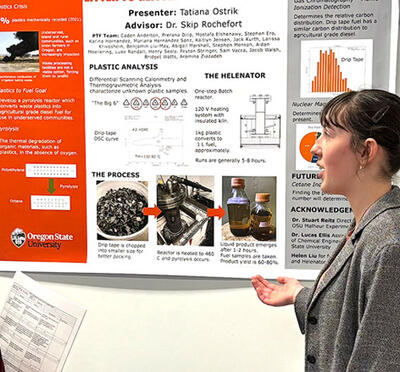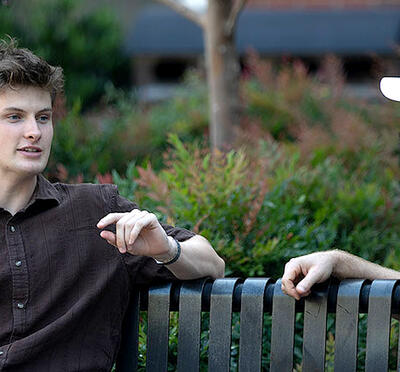When Lucas Ellis tried explaining how you can design catalysts to his students, he often ran into blank stares. Even for undergraduates, the concept of how a catalyst’s structure influences its performance in chemical reactions can be abstract and difficult to visualize.
So, he tried something different: toys.
“I have four-year-old twins, and I realized if I just had toys that you could engage with, I could build a bunch of lessons about catalysis,” said Ellis, an assistant professor of chemical engineering.
That idea inspired the Catalysis Toys Project, a set of 3D-printable educational tools developed by Ellis and his students, Samantha Hoffman and Ella Farrell. The toys—part Lego set, part science kit—are free to download from the Ellis Lab website, along with instructions and tips for printing.
From Legos to zeolites
The project now includes two primary toy platforms. One mimics Lego-style blocks, where different catalyst particles can be attached to a base plate. Some pieces even contain magnets to model “active sites” where reactions occur, helping learners visualize how molecules adsorb onto a surface.
The second platform, launched by Hoffmann, looks more like a K’NEX set. With it, students can build realistic atomic-scale structures, such as sodalite cages that comprise industrial zeolites — porous, crystalline minerals known for their ability to filter, adsorb, and react substances. By swapping connectors, players can model different zeolite types and see how their pores influence which molecules fit inside.
Farrell expanded the kits with magnets in the form of “single sites” that simulate how researchers dope zeolites with different elements to dramatically change their catalytic properties. Magnets show how molecules stick to these sites, paving the way for conversations about diffusion, adsorption, and reaction pathways.
Students driving innovation
Both Hoffmann and Farrell came to the project through Oregon State’s URSA Engage program, which pairs undergraduates with research mentors.
Hoffmann, a computer science major with years of 3D-printing experience, designed many of the core pieces. “I’ve had a 3D printer since I was ten,” she said. “It’s really cool that, as a computer scientist, I’m working in a chemical engineering lab doing things most akin to mechanical engineering.” Farrell, a mechanical engineering student, brought in fresh ideas about magnets and modular design. “I thought chemistry was confusing until I played with molecule kits,” she said. “I wanted to create something that helps other people understand chemistry better, too.”

Teaching across generations
The toys are deliberately versatile. Ellis envisions them as tools for high school classrooms, college lectures, or hands-on STEM outreach programs. But he’s also seen his young children play with them, snapping magnetic molecules together to imagine chemical bonds forming and breaking.
“You can abstract it to any level,” Hoffmann said. “You can just tell a ten-year-old, ‘This is a bond,’ or you can go into extreme detail about how diffusion works in a zeolite pore.” Educators have already shown interest. A STEM outreach club at Oregon State saw the toys as a way to inspire young women in science, while professors have used them as teaching aids in reaction engineering courses. Unlike traditional molecular model kits, which can cost hundreds of dollars, the catalysis toys are free and customizable.
“We’ve posted everything on Thingiverse so anyone can download and print them,” Ellis said. “Most universities now have 3D printers, so it’s as simple as printing the designs and incorporating them into lessons.”
Making catalysis tangible
Ellis says the toys have even helped his parents finally understand his work.
“I think for 15 years my mom didn’t understand what I did,” he said. “But once I started making these toys, it started to connect the dots.” The team has ambitious plans. They’re incorporating 3D-printed catalyst models into a new National Science Foundation-funded project that will allow students to hold and manipulate atomistic simulations, linking computational models with physical, tactile learning tools.
At the heart of it all is a simple goal: making science fun.
“Our biggest motivation is just to make it engaging and captivating,” Ellis said.




